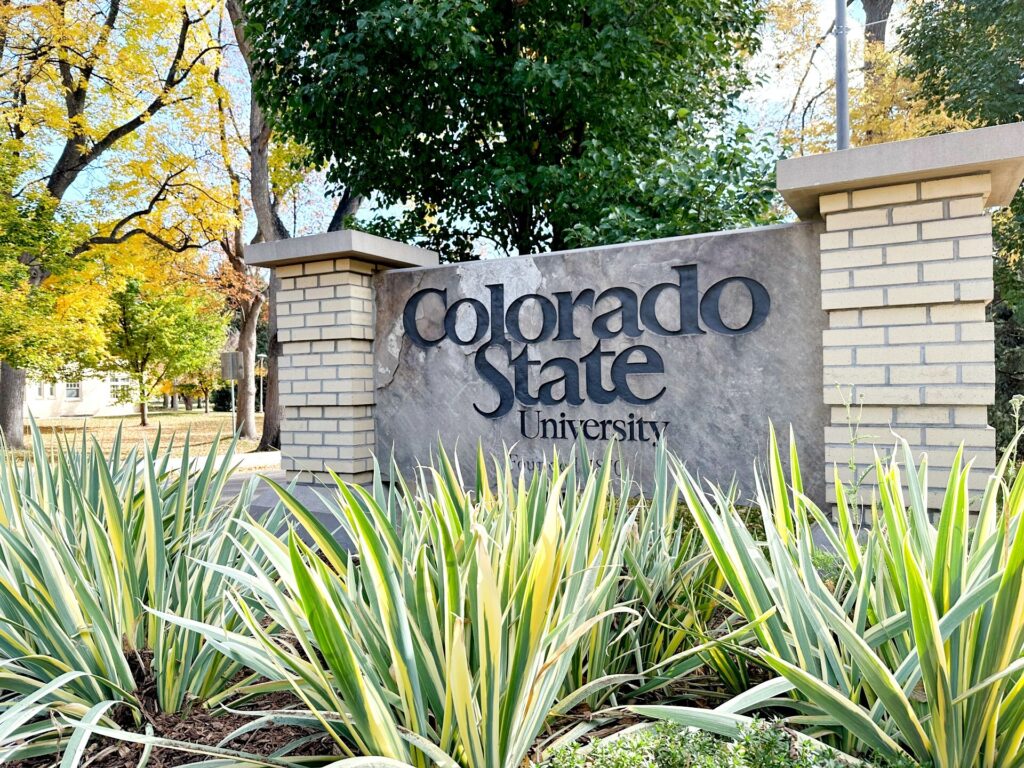
The rate of first-time Colorado college students returning to their school for a second year bumped up last fall – getting closer to pre-pandemic levels. That’s a retention rate of about 66 percent of students, compared to 67 percent nationally, according to a new report released by the National Student Clearinghouse Research Center.
Colorado’s persistence rate, on the other hand, which is the rate of students who entered college for the first time and returned to any college the next year, grew to 76 percent, the same as the national rate. That’s good news for higher education leaders, who have worked hard to get students back after two hard pandemic years.
Meanwhile, the size of freshman classes in Colorado – 37,367 students – grew by nearly 2,000 students, but is still short of 2019 enrollment.
“It is very encouraging to see that the students who entered college in the second year of the pandemic have stayed enrolled at higher rates,” said Doug Shapiro, executive director of the NSCRC.
Nationally, the cohort that typically enters four-year institutions from community college, however, remained well below pre-pandemic levels as it continued to decline in fall 2021. Those figures weren’t available for Colorado.
Retention rates vary across institutions
CU Boulder had an 88 percent retention rate. That tied the all-time high initially set by the 2016 first-year student cohort. The campus also had a 33-year high – nearly 96 percent - fall-to-spring retention rate among first-year students last year.
“In a time when college and university students—including ours—are still recovering from the pandemic, this number shows that our tight focus on student success is producing positive results,” CU Boulder provost Russell Moore said in February.
The fall to spring retention rate is one indicator that the school has a good chance to keep them on the Boulder campus through graduation, Moore said. University officials credit the Buff Undergraduate Success team, charged with increasing retention at the school since the fall of 2021. It has carried out several initiatives including revamping the campus’ policy for students who repeat a course for credit, creating a basic needs center for students, assessing tutoring resources, and piloting a speedier transfer credit evaluation process.
This year the team has worked on establishing a plan to reduce tuition and fees for lower-income students, and providing training on a first-year student success dashboard, among other items.

Colorado State University in Fort Collins had a retention rate of 84 percent from fall 2021 to fall 2022, the most recent statistics available.
Fort Lewis College’s retention rate was 60 percent. That is up six percentage points from the previous year but not back to a pre-pandemic high of 68 percent.
A special program with New Mexico saw a significant boost in retention from 62 percent to 70 percent. The program allows graduates of San Juan College in Farmington, New Mexico and who are residents of that state to earn a baccalaureate degree at Fort Lewis College at the in-state tuition rate.
Western Colorado University in Gunnison has been on an upward trend since 2018. The retention rate was nearly 76 percent last fall, up three percentage points, which matches the pre-pandemic average for the 2016 to 2018 entering classes. However, the size of the freshman class, while it increased in 2021, has not returned to pre-pandemic levels.
Some colleges had flat retention rates
Some open access campuses— which don’t have selective admission criteria, but are crucial avenues for working students, older students and first-generation students among others —didn’t see the significant increases they’d like.
Metropolitan State University Denver’s retention rate for the fall of 2021 to fall of 2022, for first-time full-time students, was 63 percent, about the same as the previous year. But that’s still higher than the 59 percent coming out of the pandemic, but university officials say there’s work to be done.
“I think universities are still stabilizing,” said Nahum Kisner, executive director of student support and retention at Metropolitan State University of Denver
“We want it (retention) to be higher for sure, but have definitely come a long way since the pandemic. I think as we look at going into next year, we've got some things in place to help make sure we get there.”
Kisner said a tuition lock has helped with retention. For example, for first-time students, the tuition will stay the same for four years. For transfer students, it's locked in for three years. The “Roadrunner Promise” scholarship guarantees a combination of federal, state and institutional scholarship aid to cover tuition and fees for students with the highest needs.
He said faculty, too, are hyper aware of retention efforts, focusing on each student and referring those who need assistance to support services.
“What that looks like is getting students connected to the resources that they need, whether it is campus engagement for a support program or cohort program, or maybe it's an affinity group….just wanting to make sure that they are engaged and connected on campus.”









